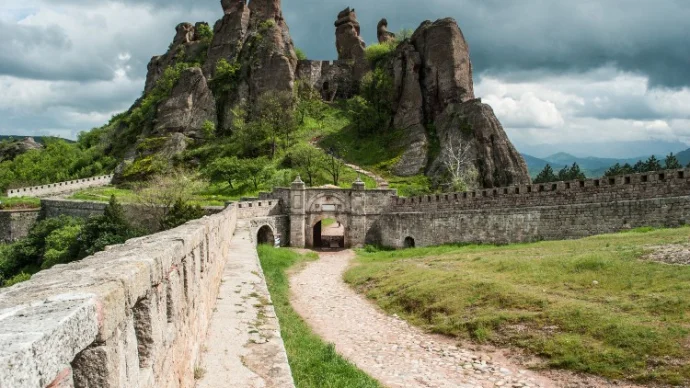
About Thracian Tomb of Kazanlak
The Thracian Tomb of Kazanlak is a late 4th century BC burial site located in Bulgaria and forms part of the ancient Thracian settlement of Seuthopolis.
History of the Thracian Tomb of Kazanlak
The Thracian Tomb of Kazanlak is perhaps best known for its incredibly well preserved examples of Thracian artwork, including wall frescoes and murals. Discovered during the construction of a bomb shelter in 1944, the tomb site is one element of a larger Thracian necropolis which contains seven brick tombs. The double frieze and and mural on the dome depict a range of battle scenes, feasts and chariot races – all key parts of life at the time.
It’s believed the tomb was constructed in line with the cult of the dead. The three distinct spaces: an antechamber, corridor and burial chamber suggest that those buried here were interred in line with traditional customs about journeying to the afterlife. The Thracian Tomb of Kazanlak was declared a UNESCO World Heritage historic site in 1979.
The Thracian Tomb of Kazanlak today
The site is one of a number of Thracian tombs found in the area – which is often known as the Valley of the Thracian Kings – and many of the artefacts from this site and others can be found on display in Kazanlak Museum.
To ensure continued conservation, access to the original tomb is limited, however visitors can explore a recreation of the tomb located nearby. Information about the history of the Thracian Tomb of Kazanlak is available on site in both English and Bulgarian. A small entry fee is charged. The tomb and museum are open daily, 9am-5pm.
Getting to the Thracian Tomb of Kazanlak
The tomb is on the outskirts of the town of Kazanlak – it’s a gentle 15 minute walk from the centre of town. Kazanluk itself is just under a 2 hour drive from Plovdiv – alternatively, it should take about 3 hours on the train (change at Karlovo).
Featured In

Bulgaria Historic Sites
Discover the best historic sites in Bulgaria, including cultural landmarks and attractions such as the ancient Thracian city of Perperikon and the medieval Boyana Church.




















